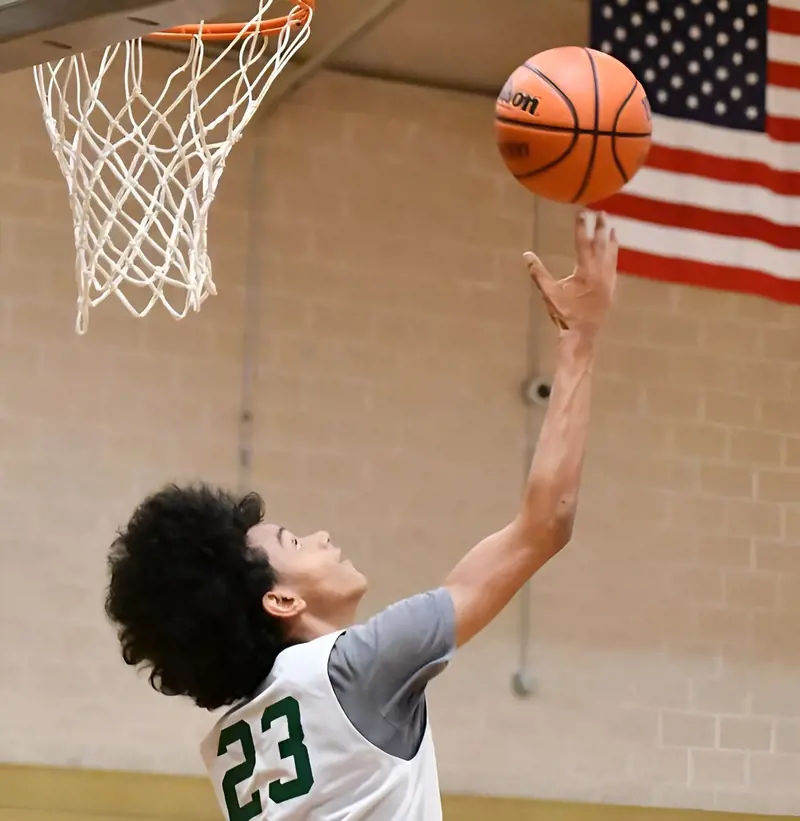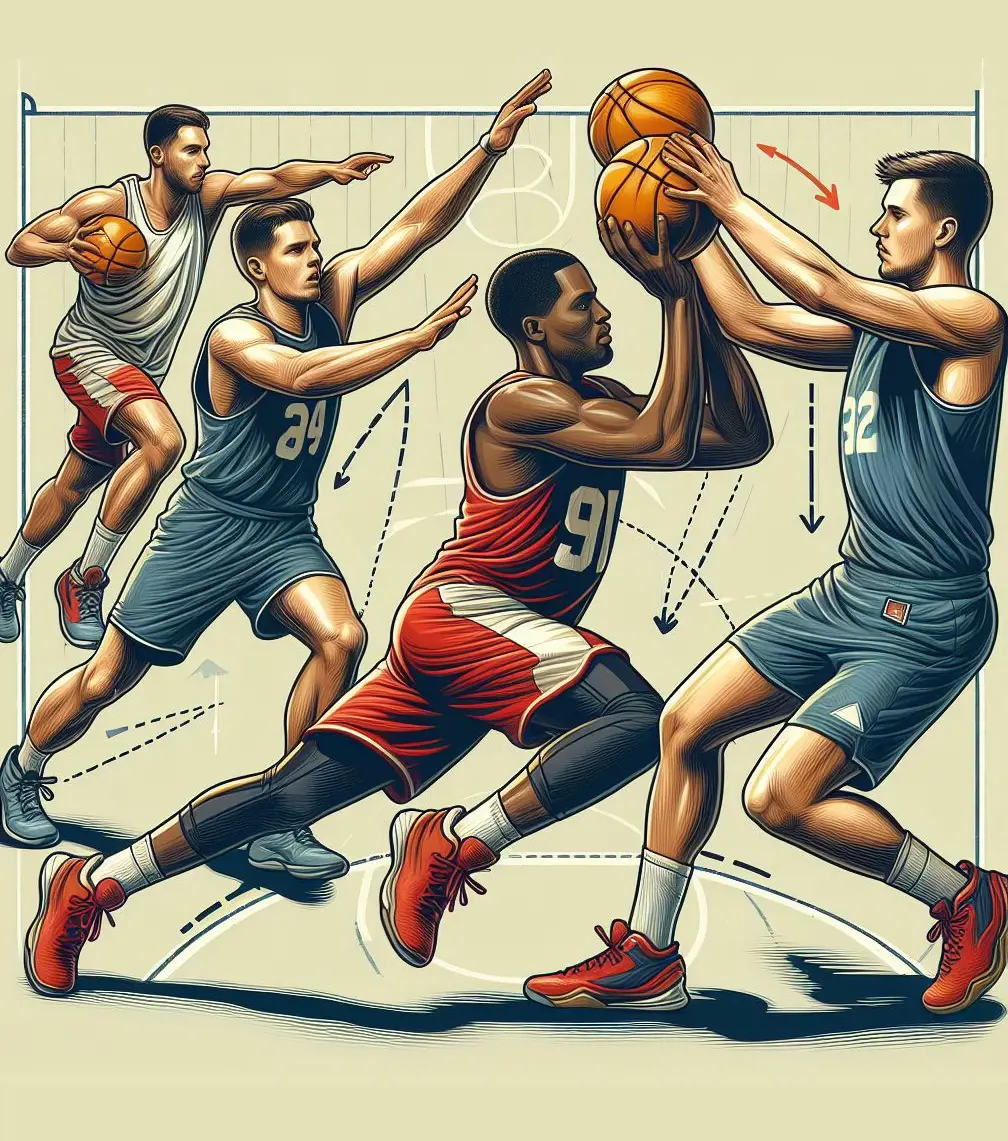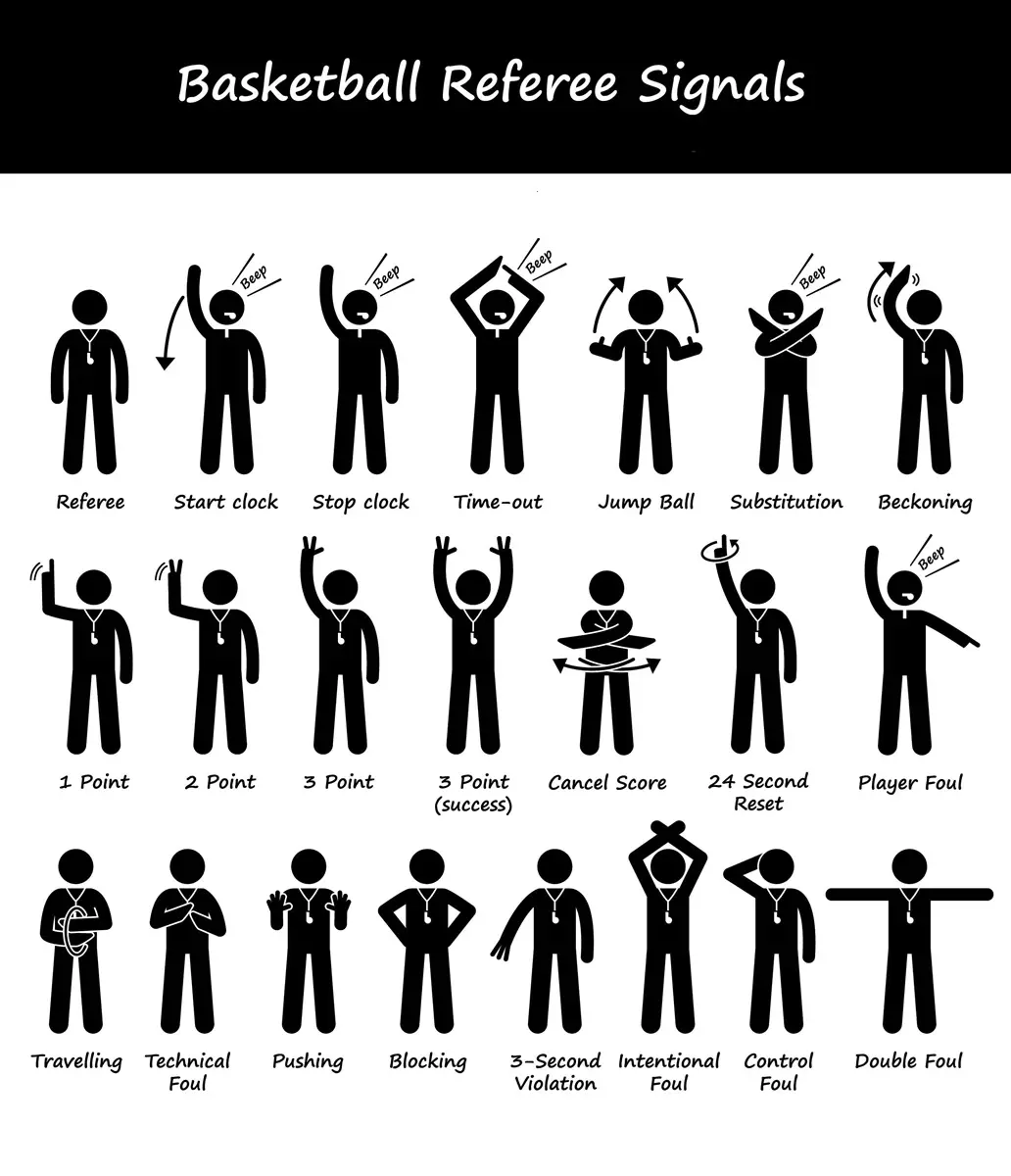
The most common defensive strategies include man-to-man defense, where players individually mark opponents, and zone defense, where specific court areas are guarded.
Full-court presses and half-court traps aim to create turnovers by applying relentless pressure. Specialized tactics like box-and-one and triangle-and-two focus on neutralizing key scorers.
Defensive plays like hedging, closeouts, and double teams add layers of complexity, emphasizing teamwork and adaptability.
The effectiveness of these plays lies in disrupting the opposing team's rhythm, showcasing the strategic side of basketball.
1. Man-to-Man Defense

Man-to-Man Defense is a fundamental basketball strategy where each defensive player is assigned to guard a specific opponent.
This defensive approach aims to deny offensive players easy scoring opportunities by closely marking them and contesting shots.
It requires players to stay vigilant, anticipate movements, and communicate effectively to switch assignments when necessary.
Man-to-Man Defense is known for its adaptability, allowing teams to apply pressure on individual players and disrupt offensive plays.
2. Zone Defense

Zone defense is a fundamental strategy in basketball where players collectively guard specific areas of the court instead of individual opponents.
The most common formations include the 2-3 and 3-2 zones. In a 2-3 zone, two players guard the front, three form a line just above the key, and in a 3-2 zone, the arrangement is reversed.
This approach offers unique advantages and challenges, making it a valuable tool in any coach's playbook.
When an offensive player enters a zone, defenders must rotate and communicate, ensuring no area is left open.
As per the New York Times, the Miami Heat used this defense to slow down two of the league's fearsome players, Jamal Murray and Nikola Jokic during the 2023 NBA Finals.
3. Full-Court Press
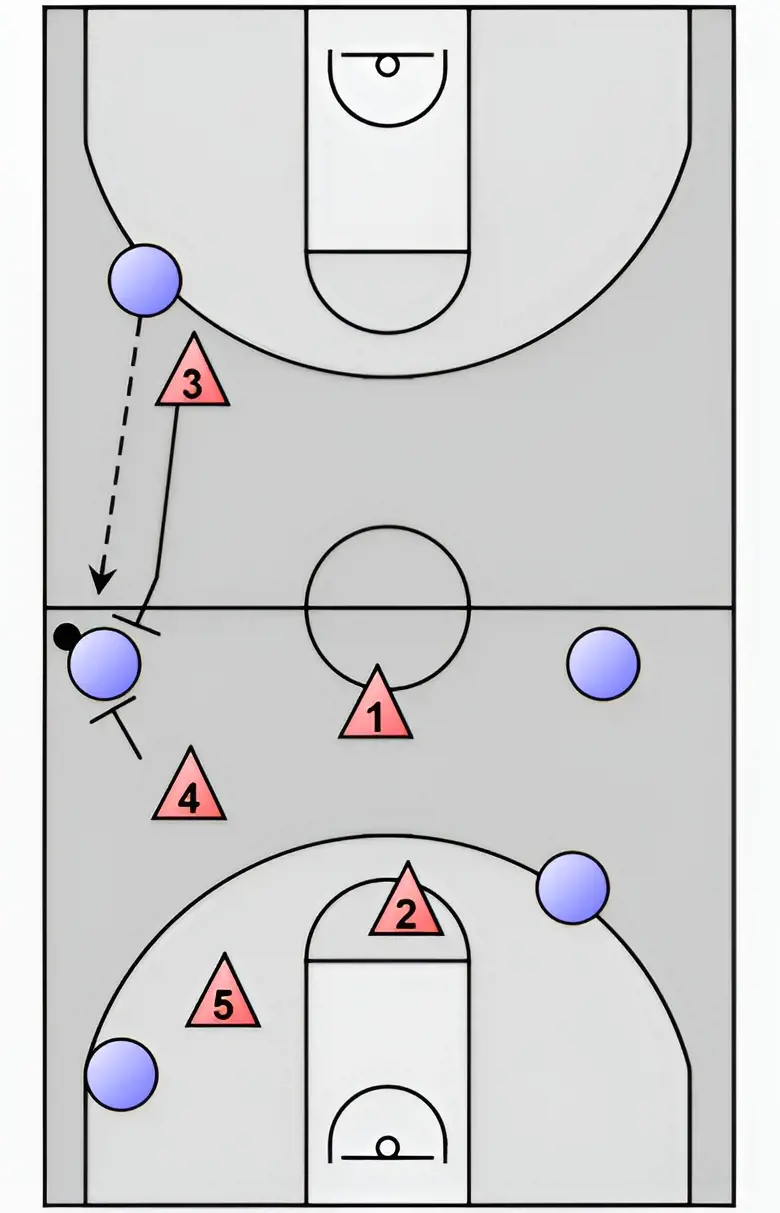
The Full-Court Press is a high-intensity defensive strategy widely used in basketball to apply pressure on the opposing team for the entire length of the court.
In this aggressive play, defenders actively challenge ball handlers from the moment the ball is inbounded, aiming to disrupt offensive plays and create fast-break opportunities.
Typically employed when a team is trailing or needs to change the momentum of a game, the Full-Court Press requires exceptional fitness and teamwork.
Defenders use speed, anticipation, and coordinated traps to make it challenging for the opposing team to advance the ball and execute their plays.
4. Half-Court Trap
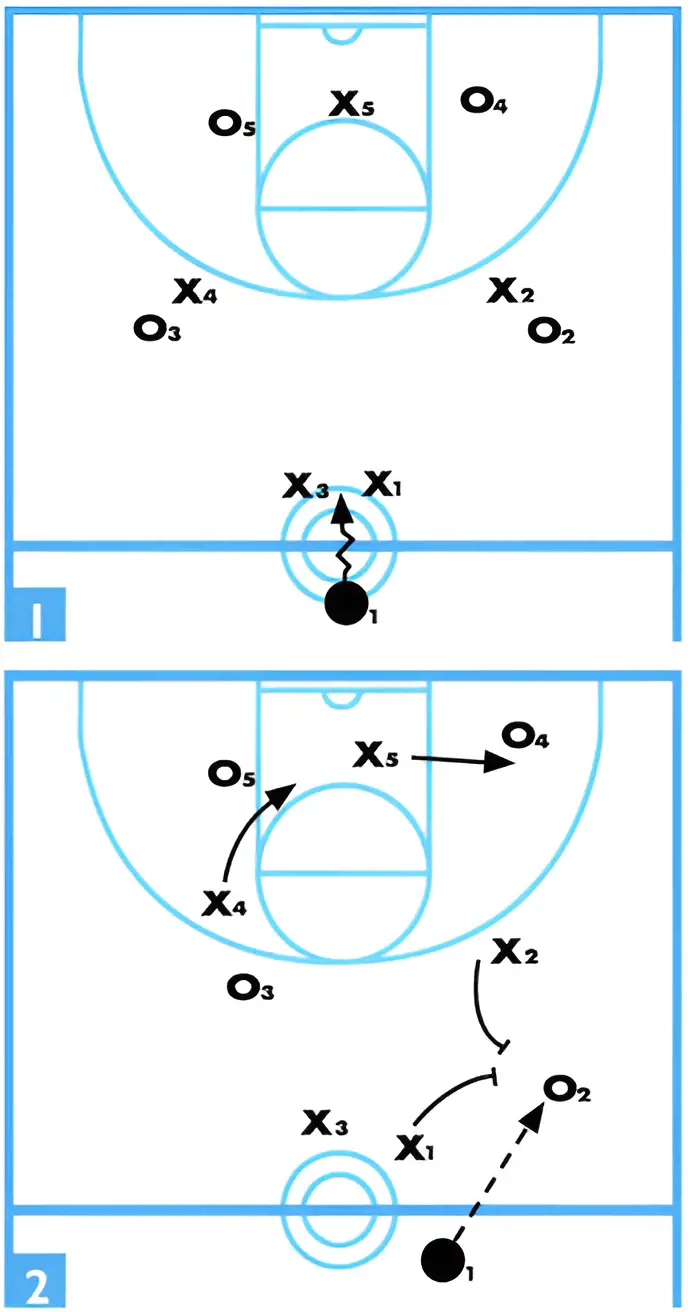
The half-court trap is a defensive strategy designed to disrupt the opponent's offensive flow right around the half-court line.
Two defenders aggressively double-team the ball handler near the half-court line, forcing them to make a quick decision.
The pressure aims to confuse or overwhelm the ball handler, leading to turnovers or rushed shots that go off target.
Simultaneously, other defenders adjust their positions to cut off passing lanes and create a challenging defensive environment.
Coaches employ variations, combining trapping with zone or man-to-man principles to keep opponents on their toes.
5. 2-2-1 Press
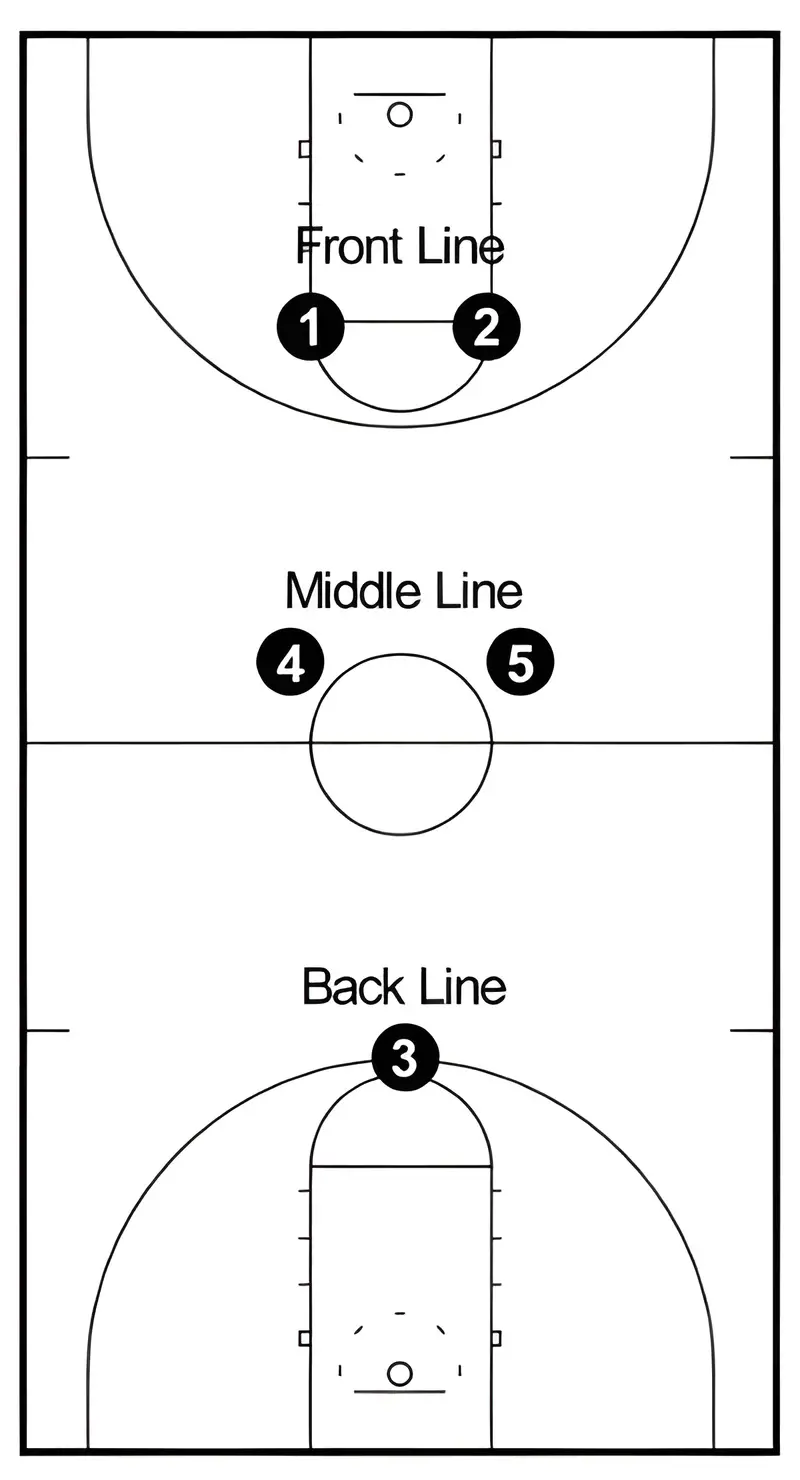
The 2-2-1 Press is a strategic defensive play widely employed in basketball to disrupt the opponent's offensive rhythm and create turnovers.
In this formation, two players apply full-court pressure, seeking to trap the ball handler near the sidelines or the half-court line.
Simultaneously, two players form a mid-court trap, aiming to force turnovers and limit passing options.
The fifth player guards the basket, preventing easy scoring opportunities. The 2-2-1 Press is effective in speeding up the game, causing hurried decisions and errant passes.
6. Box-and-One Defense

Box-and-One Defense is a strategic defensive play that combines zone and man-to-man principles.
In this tactic, four players form a zone defense, typically a box shape, while the fifth player focuses on man-marking the opposing team's most potent scorer.
The four-zone defenders work together to cover specific areas, passing off offensive players as they move through their designated zones.
Meanwhile, the individual defender shadows the targeted scorer, denying them space and disrupting their scoring opportunities.
7. Triangle-and-Two Defense

The Triangle-and-Two Defense is a strategic basketball defensive play that combines elements of both zone and man-to-man defenses.
Here, three players form a triangle zone defense, typically in the key area, while the remaining two defenders focus on man-marking specific high-scoring opponents.
This defense requires seamless communication and coordination among players to adapt quickly to the dynamic movements of the offense.
8. Run and Jump Defense
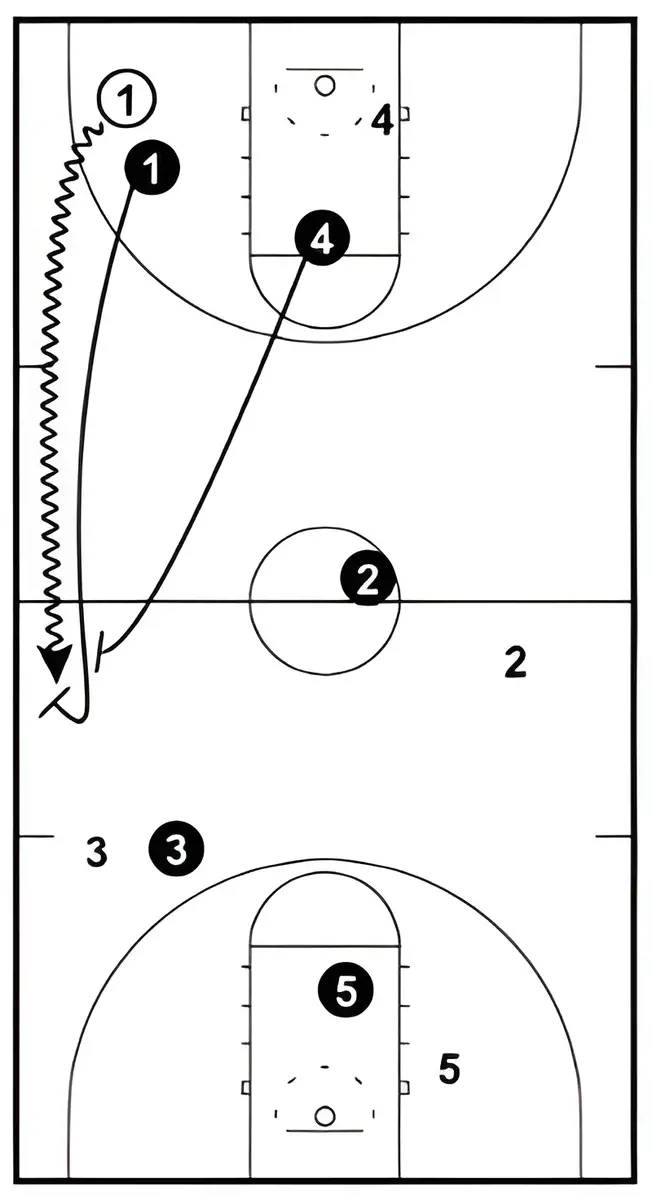
The "Run and Jump Defense" is a dynamic and aggressive strategy widely utilized in basketball to disrupt the opponent's offensive rhythm.
Run and Jump combines man-to-man principles with aggressive jump switches and sideline traps.
Defenders actively "run and jump" at the ball handler, forcing them towards the sideline and triggering traps from teammates.
This defensive drill relies on athleticism, quick decision-making, and coordinated teamwork.
9. Switch Defense
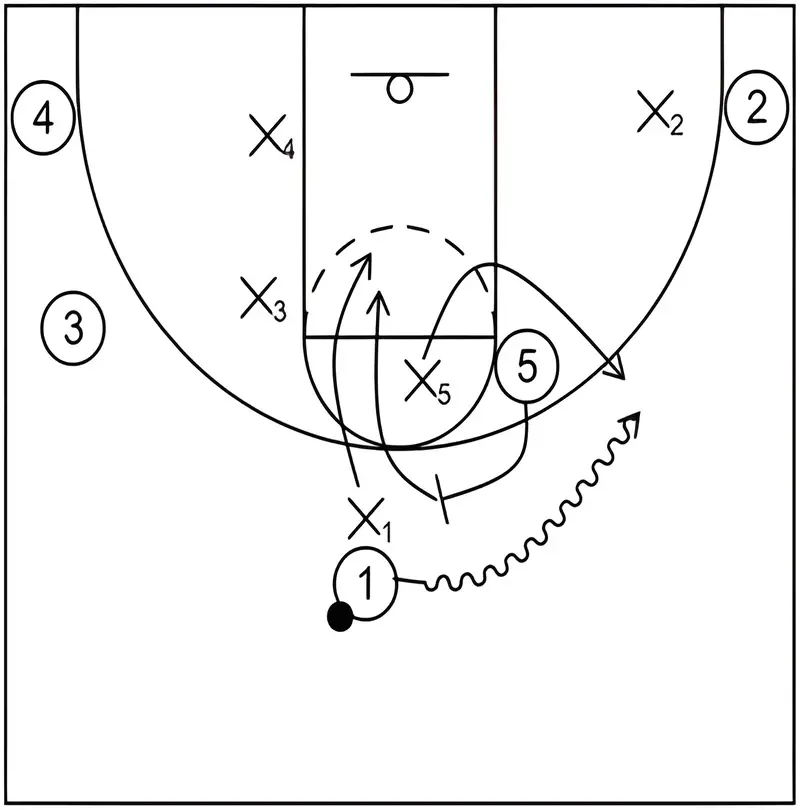
Switch defense is a strategic basketball defensive play where players seamlessly exchange defensive assignments to counter offensive moves.
In this tactic, defenders switch opponents during screens or picks, ensuring continuous coverage and disrupting the opponent's offensive flow.
It demands communication, agility, and a deep understanding among teammates. The objective is to eliminate mismatches and prevent open shots by adapting quickly to offensive movements.
10. Denial Defense

Denial Defense is a targeted strategy used to disrupt ball movement and prevent the intended receiver from getting the ball and accessing key scoring areas.
Here, defenders apply intense pressure on their assigned opponents, making it difficult for them to catch passes or establish a rhythm.
This play is particularly effective against teams with skilled playmakers or point guards, as it disrupts their ability to initiate plays and distribute the ball effectively.
11. Defensive Hedge
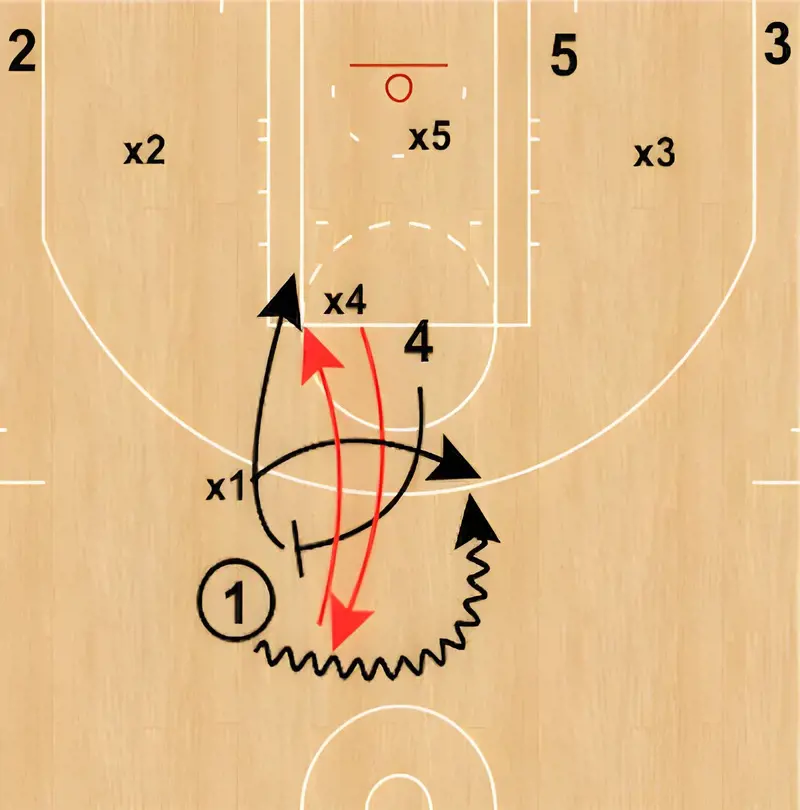
The defensive hedge is a crucial maneuver in basketball, often employed against the pick-and-roll, one of the most common offensive plays.
It is a calculated step taken by the defender guarding the screener to momentarily slow down the ball handler, preventing them from driving directly towards the basket.
Also known as the Show, here, a defender temporarily steps out to impede the progress of the ball handler coming off a screen, giving the original defender a chance to recover.
12. Pack Line Defense
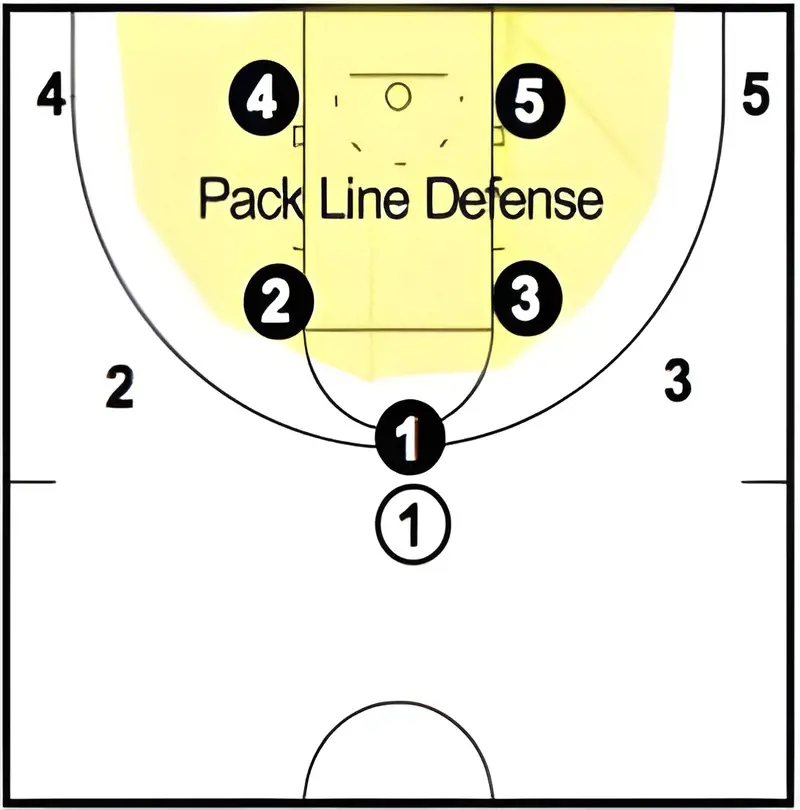
Pack Line Defense is a basketball defensive strategy renowned for its emphasis on protecting the painted area and limiting opponents' access to the basket.
Popularized by coaches like Dick Bennett and Tom Izzo, this system positions defenders inside an imaginary line (the pack line) around the key, creating a wall to discourage drives.
The Pack Line Defense excels at denying penetration, forcing contested shots, and facilitating defensive rebounds.
When the ball handler penetrates, the defender guarding the ball's initial target (usually the center) rotates to help, while the on-ball defender recovers to their original assignment.
13. Matchup Zone
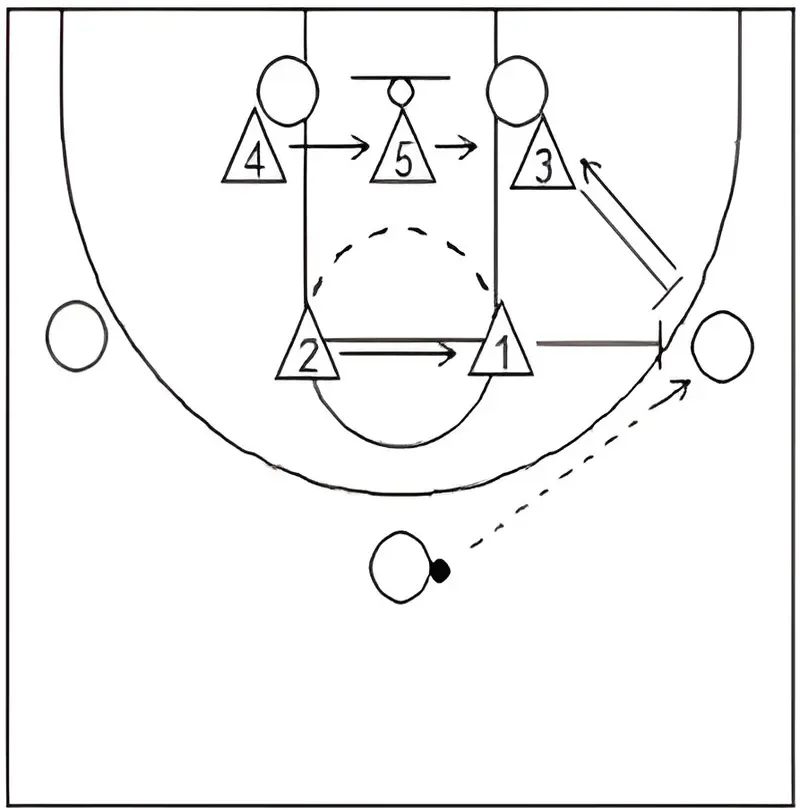
The Matchup Zone is a sophisticated defensive strategy widely employed in basketball, combining elements of both man-to-man and zone defenses.
In this approach, defenders are responsible for specific areas but switch to man-to-man coverage when an offensive player enters their designated zone.
The Matchup Zone aims to disrupt passing lanes, limit open shots, and create turnovers by confusing opponents with seamless transitions between zone and individual defense.
This defensive play requires players with a deep understanding of defensive principles, effective communication, and the ability to anticipate offensive movements.
14. Closeout Defense
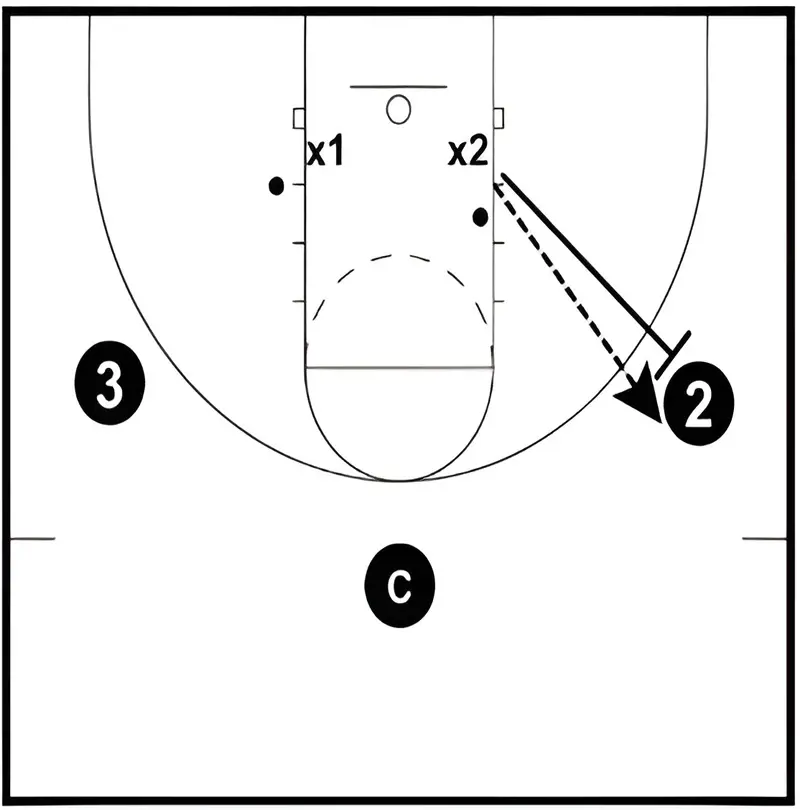
Closeout defense is a fundamental aspect of basketball strategy aimed at disrupting shooters and preventing easy baskets.
In this defensive play, a defender quickly closes the distance to an offensive player with the ball, applying pressure to limit their shooting options.
The goal is to force the offensive player to either put the ball on the floor or take a contested shot.
A strong closeout shows hustle and defensive commitment, energizing your teammates and setting the tone for a lockdown defense.
Bend your knees, keep your center of gravity low, and shuffle laterally to maintain quick movement.
15. Defensive Double Team

The Defensive Double Team is a strategic basketball maneuver where two defenders collaborate to trap an offensive player, aiming to force turnovers or disrupt their play.
This defensive play is typically employed against a skilled ball handler or a potent scorer like centers and point guards.
By converging quickly and synchronizing their movements, the defenders limit the offensive player's options, making it challenging for them to pass or dribble effectively.
When a ball handler gets caught in a tight space, a double team can force a turnover or a bad pass.

